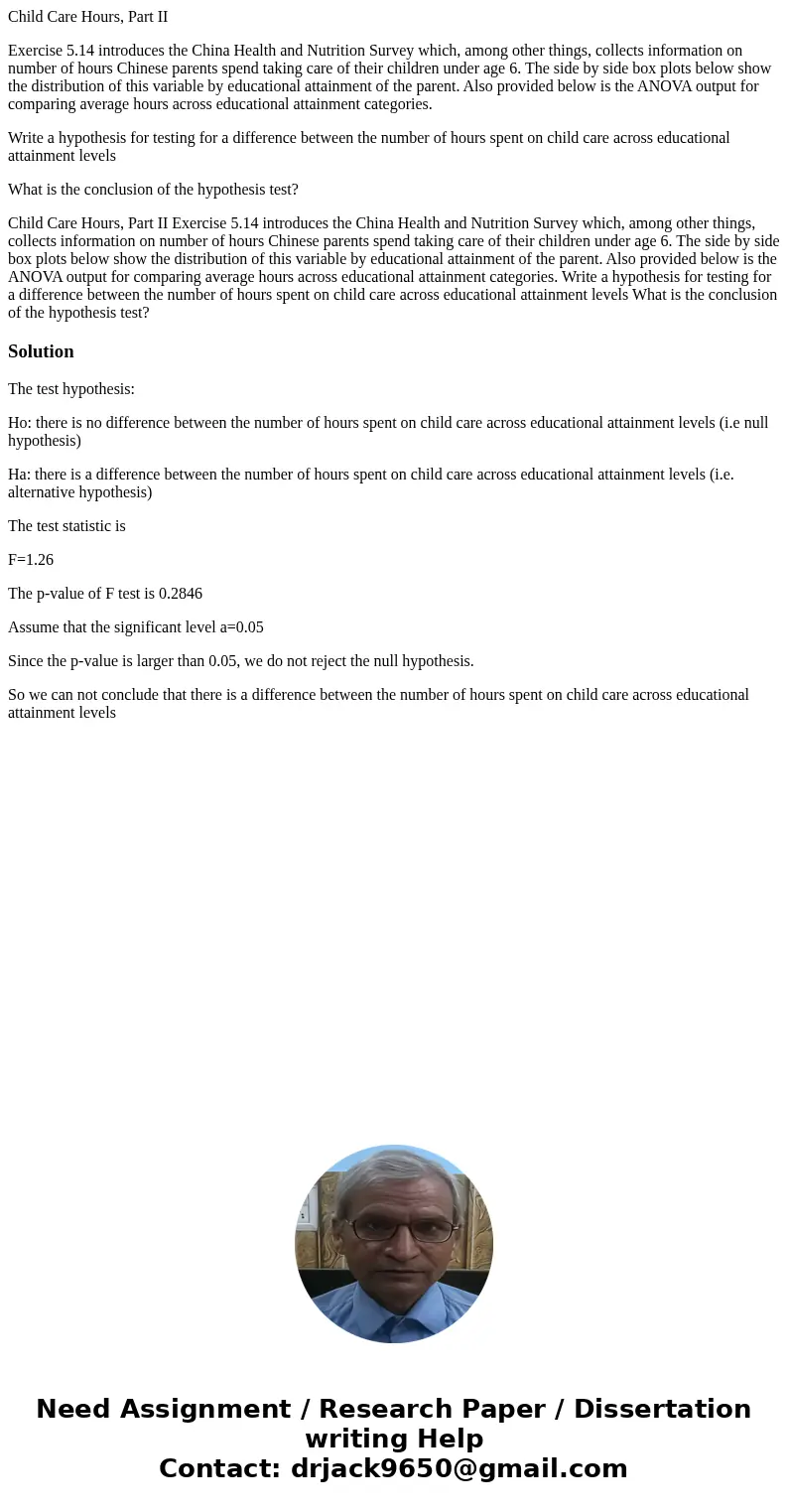Child Care Hours Part II Exercise 514 introduces the China H
Child Care Hours, Part II
Exercise 5.14 introduces the China Health and Nutrition Survey which, among other things, collects information on number of hours Chinese parents spend taking care of their children under age 6. The side by side box plots below show the distribution of this variable by educational attainment of the parent. Also provided below is the ANOVA output for comparing average hours across educational attainment categories.
Write a hypothesis for testing for a difference between the number of hours spent on child care across educational attainment levels
What is the conclusion of the hypothesis test?
Child Care Hours, Part II Exercise 5.14 introduces the China Health and Nutrition Survey which, among other things, collects information on number of hours Chinese parents spend taking care of their children under age 6. The side by side box plots below show the distribution of this variable by educational attainment of the parent. Also provided below is the ANOVA output for comparing average hours across educational attainment categories. Write a hypothesis for testing for a difference between the number of hours spent on child care across educational attainment levels What is the conclusion of the hypothesis test?Solution
The test hypothesis:
Ho: there is no difference between the number of hours spent on child care across educational attainment levels (i.e null hypothesis)
Ha: there is a difference between the number of hours spent on child care across educational attainment levels (i.e. alternative hypothesis)
The test statistic is
F=1.26
The p-value of F test is 0.2846
Assume that the significant level a=0.05
Since the p-value is larger than 0.05, we do not reject the null hypothesis.
So we can not conclude that there is a difference between the number of hours spent on child care across educational attainment levels

 Homework Sourse
Homework Sourse